Disease Threats and Global WASH Killers:
Cholera, Typhoid, and Other Waterborne Infections
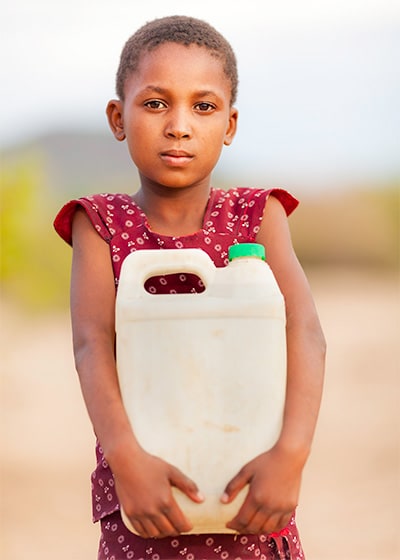
Safe water, sanitation, and hygiene (WASH) are fundamental to human health. Yet more than 884 million people globally have no safe water to drink.
Nearly 2.4 billion people lack access to basic sanitation facilities. Many people resort to open defecation—a practice that can endanger the safety of water used for drinking and personal use.
Infants and children are more likely to die due to lack of access to safe water.
Many diarrheal diseases spread through unsafe water and sanitation. These conditions, along with poor hygiene, can also cause the deadly diseases cholera and typhoid fever. Poor WASH conditions are also linked to emerging challenges such as extensively drug-resistant typhoid fever.
Focused efforts are needed to accelerate and sustain progress toward eliminating WASH-related diseases and emerging threats like antibiotic-resistant infections.
Preventable Diseases
Each year…
- 1.7 billion cases among children under 5
- 3 million cases
- 95,000 deaths
- 11 million cases
- 117,000 deaths
The Global Impact of Waterborne Infections and WASH-related Diseases
- Many waterborne infections cause diarrhea and loss of body fluids, resulting too often in severe dehydration and death. Diarrhea is the fifth-leading cause of death among children under the age of 5.
- Frequent and recurring diarrhea can reduce children’s growth and cognitive development and increase their susceptibility to other infectious diseases.
- About 88% of diarrhea-associated deaths are due to unsafe water, inadequate sanitation, and insufficient hygiene.
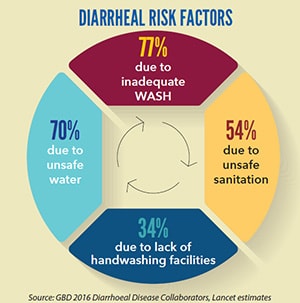
Ending Cholera: A Roadmap to 2030
In 2017, the Global Task Force on Cholera Control launched Ending Cholera: The Global Roadmap to 2030. The declaration calls for a collective approach to reduce cholera deaths by 90% and to eliminate local disease transmission by 2030 in 20 countries.
- Infections cause extreme diarrhea with rapid loss of body fluids and can be fatal within hours if not treated.
- Cholera has been reported in 47 countries worldwide, and is most likely to affect the poorest and most vulnerable populations, including young children and older adults.
- Global efforts which primarily focus on outbreak response are shifting to include long-term prevention initiatives through improved WASH and oral cholera vaccines.
- Typhoid fever is a bacterial disease spread by drinking or eating contaminated water or food.
- The first known outbreak of a strain of extensively drug-resistant (XDR) typhoid fever in Pakistan resulted in over 10,000 cases from 2016-2019, including 30 cases in the United States.
- This XDR strain does not respond to most antibiotics, making infections harder to treat.
- As treatment options become more limited, further preventive measures are urgently needed to prevent typhoid infections and deaths, such as improved sanitation and hygiene, and typhoid vaccination campaigns.
Improving Access to WASH in Resource-limited Settings
For every $1 invested in water and sanitation, $4 will be saved in global healthcare costs.
Making progress on WASH challenges in healthcare facilities and community settings in low- and middle-income countries will require commitment and resource mobilization at the local, national, and global levels.
Ensuring access in healthcare facilities to safe drinking water, handwashing facilities, and safe disposal of human waste, among other prevention strategies for infection control, can help prevent disease transmission and reduce the spread of antimicrobial resistance.
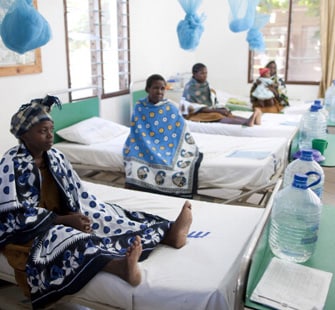
Safe Water
Safe drinking water for patients and staff
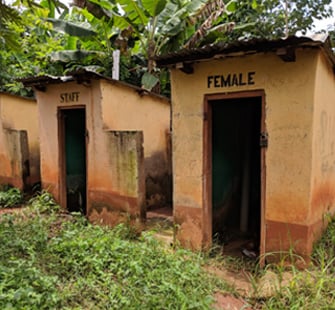
Sanitation
Clean and maintained toilets or latrines that isolate or treat waste effectively
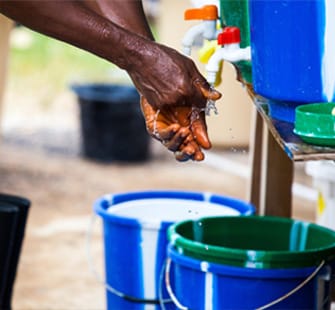
Hygiene
Handwashing stations with sinks, soap and water, and alcohol-based hand sanitizer for clinic staff
Identifying WASH challenges and implementing solutions in households, schools, and other community settings can help prevent diarrhea, cholera, typhoid fever, or some antibiotic-resistant infections.
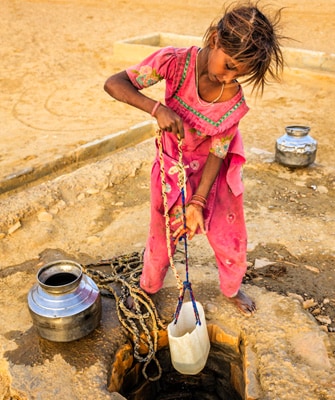
Safe Water
Improve access to safe community water systems and household water treatment
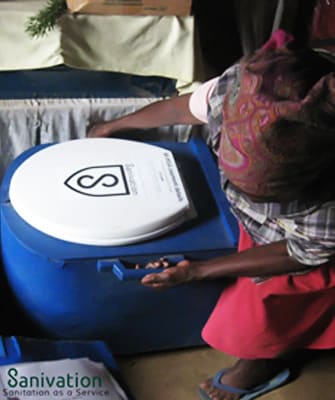
Sanitation
Manage fecal waste using new approaches
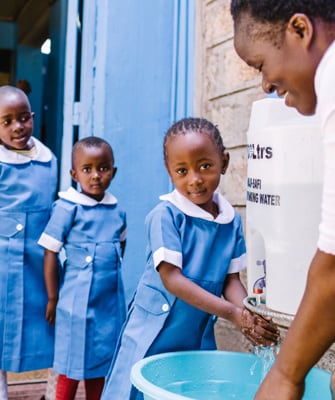
Hygiene
Increase access to and use of handwashing facilities
Taking Action
CDC’s Waterborne Disease Prevention Branch works with partners to reduce the global burden of waterborne infections in the following ways:
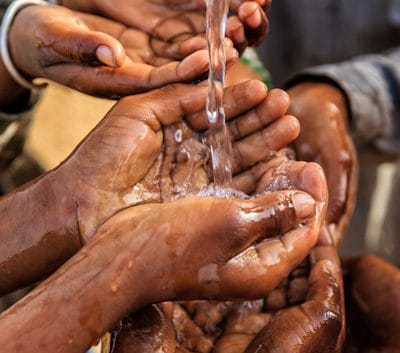
- Working as a founding member of the Global Task Force on Cholera Control
- Providing expertise to countries that have committed to the Ending Cholera initiative by supporting WASH disease prevention measures, cholera treatment, surveillance, laboratory testing, epidemiologic studies and vaccines
- Working with the World Health Organization, UNICEF, Doctors Without Borders, the International Federation of the Red Cross, and other institutions to reduce cholera deaths by 90% in 20 countries by 2030
- Improving cholera surveillance, treatment, laboratory testing, outbreak preparedness, and prevention through targeted WASH interventions and vaccination campaigns
- Working with Ministries of Health and Ministries of Water globally to improve typhoid surveillance, community water treatment, and community WASH practices in typhoid endemic areas, especially municipal settings where antibiotic resistance is a big concern
- Educating clinicians in the United States and abroad on approaches for diagnosing typhoid fever, testing for antibiotic resistance, and properly treating patients diagnosed with XDR typhoid
- Educating people on the importance of typhoid vaccination before travel to endemic areas and on safe food and water practices while traveling
- Working with governmental partners, Ministries of Health and Water, and non-governmental aid organizations to include water, sanitation, hygiene, and waste management for healthcare facilities
- Supporting the UN’s Sustainable Development Goals
- Training public health workers on the importance of WASH-based practices
Safe Water
Adequate Sanitation
Improved Hygiene